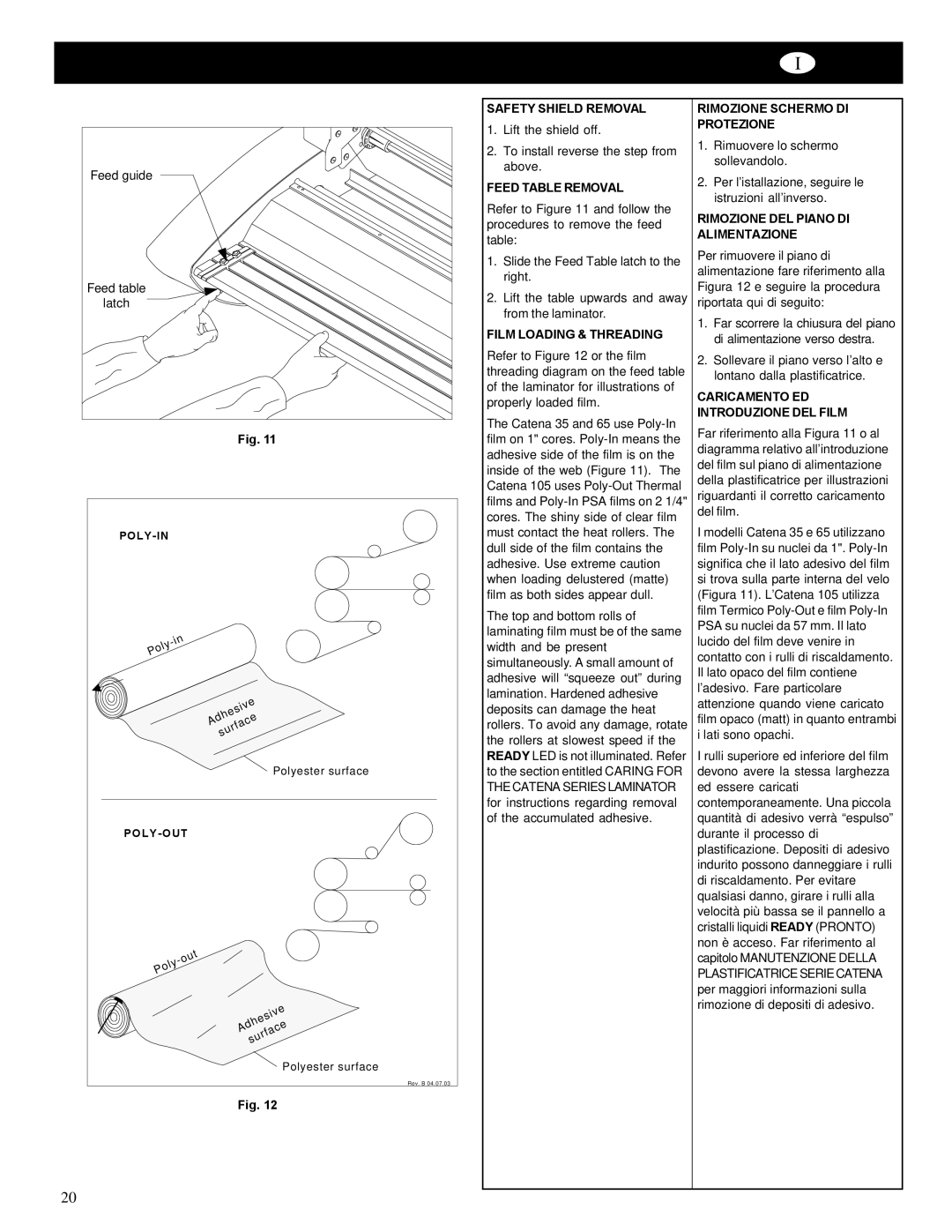
I
Feed guide |
Feed table |
latch |
Fig. 11
in |
- |
Poly |
Adhesive |
surface |
Polyester surface |
P O L Y - O U T |
out |
- |
Poly |
Adhesive |
surface |
Polyester surface |
Rev. B 04.07.03 |
Fig. 12
SAFETY SHIELD REMOVAL
1.Lift the shield off.
2.To install reverse the step from above.
FEED TABLE REMOVAL
Refer to Figure 11 and follow the procedures to remove the feed table:
1.Slide the Feed Table latch to the right.
2.Lift the table upwards and away from the laminator.
FILM LOADING & THREADING
Refer to Figure 12 or the film threading diagram on the feed table of the laminator for illustrations of properly loaded film.
The Catena 35 and 65 use
The top and bottom rolls of laminating film must be of the same width and be present simultaneously. A small amount of adhesive will “squeeze out” during lamination. Hardened adhesive deposits can damage the heat rollers. To avoid any damage, rotate the rollers at slowest speed if the READY LED is not illuminated. Refer to the section entitled CARING FOR THE CATENA SERIES LAMINATOR for instructions regarding removal of the accumulated adhesive.
RIMOZIONE SCHERMO DI PROTEZIONE
1.Rimuovere lo schermo sollevandolo.
2.Per l’istallazione, seguire le istruzioni all’inverso.
RIMOZIONE DEL PIANO DI ALIMENTAZIONE
Per rimuovere il piano di alimentazione fare riferimento alla Figura 12 e seguire la procedura riportata qui di seguito:
1.Far scorrere la chiusura del piano di alimentazione verso destra.
2.Sollevare il piano verso l’alto e lontano dalla plastificatrice.
CARICAMENTO ED INTRODUZIONE DEL FILM
Far riferimento alla Figura 11 o al diagramma relativo all’introduzione del film sul piano di alimentazione della plastificatrice per illustrazioni riguardanti il corretto caricamento del film.
I modelli Catena 35 e 65 utilizzano film
I rulli superiore ed inferiore del film devono avere la stessa larghezza ed essere caricati contemporaneamente. Una piccola quantità di adesivo verrà “espulso” durante il processo di plastificazione. Depositi di adesivo indurito possono danneggiare i rulli di riscaldamento. Per evitare qualsiasi danno, girare i rulli alla velocità più bassa se il pannello a cristalli liquidi READY (PRONTO) non è acceso. Far riferimento al capitolo MANUTENZIONE DELLA PLASTIFICATRICE SERIE CATENA per maggiori informazioni sulla rimozione di depositi di adesivo.
20
